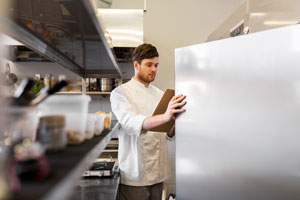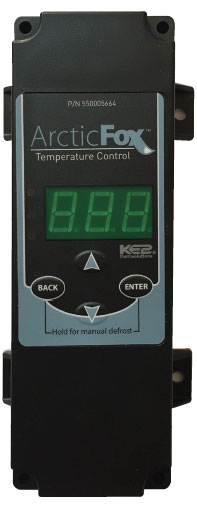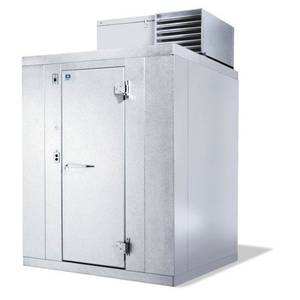Restaurant owners and chefs are monitoring refrigeration temperatures remotely
We all know food product stored in restaurant walk-ins represent the industry’s greatest financial investments. That’s why chefs, restauranteurs and in-house maintenance staff from San Francisco to Miami are going to love the money saved and heartache avoided by investing in the ArcticFox controller, a system which allows for remote monitoring of walk-in refrigeration.
Simply put, there’s too much money in restaurant coolers to pass on this state-of-the-art, cost-saving technology. Kolpak introduced the ArcticFox controller to the foodservice industry in the early 2010s.
If you’re a veteran of the restaurant industry, you can relate to all-too-often frustrations facing back-of-the-house staff due to walk-in service issues.

Example: It’s late Sunday night. Your business is closed. Your walk-in is malfunctioning, and you don’t even know it. (How could you? You’re not at the restaurant! More on that shortly.)
You will discover refrigeration issues the following morning. Consequences worsen if your business is closed the next day. Either way, you lose valuable time – and food product – that could have been utilized to schedule a technician or order parts. Meanwhile, every tick, tick, tick on the clock increases the likelihood that walk-in issues will slow down food production, leading to a dip in revenue.
Instead of living your best life, you’re on walk-in door duty, ensuring staff don’t enter the cooler, allowing cold air to escape before a technician fixes it. Good luck with lunch and dinner service!
You can avoid this scenario by investing in the ArcticFox controller by Kolpak.
What makes the ArcticFox controller revolutionary in the restaurant industry?
It’s an all-in-one control. Truly, it does it all, eliminating the need for accessories and extra costs like motion detectors, alarms, secondary refrigeration control and fan delay switches.
Here’s an illustration of energy savings with the ArcticFox controller: The ArcticFox controller includes Tru-Dmnd technology which initiates defrosting when needed, not based on time like other refrigeration. This leads to more than a 90 percent reduction in defrost cycles on standard system defrost cycles and more than 10 percent reduction in cycles when compared to smart defrost controls. Both figures lead to a notable difference on any foodservice operation’s energy bill.
And here’s another example: No more complaining about lights left on in the walk-in. With the ArcticFox controller, a light control turns on the light when the door is open and turns off the light at the desired time.
Additional features include 120° ambient refrigeration design, door ajar alarm, CAT 5 cable connectivity, diagnostic functionality and self-adjusting defrost cycles.

How do you know if the ArticFox controller is ideal for your foodservice operation?
Truth is, this system is perfect for any operation that wants to save money, including on energy costs. Here are some examples:
- Hotels where maintenance staffers may work far from the back of the house, therefore not monitoring coolers on a regular basis.
- Restaurant chains owned or operated by a management team which monitors multiple walk-ins on a smart phone.
- Small foodservice operations that buy smart, investing more now than later to avoid higher energy costs and repair issues – the latter threatening future sales revenue.
How can I purchase an ArcticFox controller?
Arctic Fox is custom designed for use with Kolpak walk-in coolers and freezers. The controller comes standard on Kolpak units.

What are the 5 Most Common Walk-in refrigerator/freezer issues that can be monitored with ArcticFox controllers?
1. Bad air flow
2. Dirty coil condensers
3. Power surges
4. Panel separations due to moisture in panels or accidental strikes against the walls
5. Loss of refrigerant due to breaks in the line or refrigeration running low


